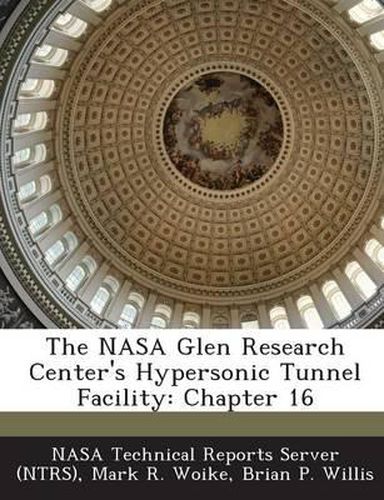Readings Newsletter
Become a Readings Member to make your shopping experience even easier.
Sign in or sign up for free!
You’re not far away from qualifying for FREE standard shipping within Australia
You’ve qualified for FREE standard shipping within Australia
The cart is loading…






The NASA Glenn Research Center’s Hypersonic Tunnel Facility (HTF) is a blow-down, freejet wind tunnel that provides true enthalpy flight conditions for Mach numbers of 5, 6, and 7. The Hypersonic Tunnel Facility is unique due to its large scale and use of non-vitiated (clean air) flow. A 3MW graphite core storage heater is used to heat the test medium of gaseous nitrogen to the high stagnation temperatures required to produce true enthalpy conditions. Gaseous oxygen is mixed into the heated test flow to generate the true air simulation. The freejet test section is 1.07m (42 in.) in diameter and 4.3m (14 ft) in length. The facility is well suited for the testing of large scale airbreathing propulsion systems. In this chapter, a brief history and detailed description of the facility are presented along with a discussion of the facility’s application towards hypersonic airbreathing propulsion testing.
$9.00 standard shipping within Australia
FREE standard shipping within Australia for orders over $100.00
Express & International shipping calculated at checkout
The NASA Glenn Research Center’s Hypersonic Tunnel Facility (HTF) is a blow-down, freejet wind tunnel that provides true enthalpy flight conditions for Mach numbers of 5, 6, and 7. The Hypersonic Tunnel Facility is unique due to its large scale and use of non-vitiated (clean air) flow. A 3MW graphite core storage heater is used to heat the test medium of gaseous nitrogen to the high stagnation temperatures required to produce true enthalpy conditions. Gaseous oxygen is mixed into the heated test flow to generate the true air simulation. The freejet test section is 1.07m (42 in.) in diameter and 4.3m (14 ft) in length. The facility is well suited for the testing of large scale airbreathing propulsion systems. In this chapter, a brief history and detailed description of the facility are presented along with a discussion of the facility’s application towards hypersonic airbreathing propulsion testing.